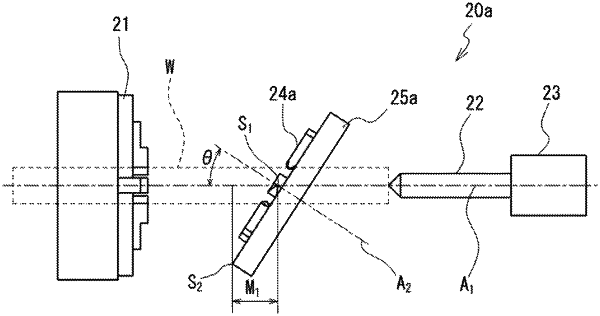| CPC B21H 5/02 (2013.01) | 10 Claims |

|
1. A method for manufacturing a gear, comprising: rotating a workpiece around a first axis; rotating, around a second axis at a position skew to the first axis, an annular tool whose center is the second axis, or a tool including a plurality of cutting blades arranged annularly around the second axis; and, while causing the workpiece and the tool to perform relative movement to each other in a direction parallel to the first axis at a speed synchronized with a rotational speed of the workpiece, making an inner peripheral side of the tool contact with an outer peripheral surface of the workpiece, and removing a material of the workpiece at a contacted portion by the relative movement between the tool and the workpiece, thereby forming a helical tooth in the outer peripheral surface of the workpiece,
the method further comprising: rotating the workpiece around the first axis, and causing the workpiece and the tool to perform the relative movement in a direction parallel to the first axis at a speed synchronized with a rotational speed of the workpiece, in such a way that, in a cross section perpendicular to the first axis, an outline of the tool contacts with a target outline being an outline of the helical tooth to be formed, and meanwhile, at a predetermined one point on the target outline, makes rolling contact with the target outline without sliding relative to the target outline, and, in an area other than the predetermined one point, rotates relative to the target outline while sliding relative to the target outline, wherein,
in the cross section perpendicular to the first axis, a diameter of a first circle being a circle having the first axis as a center and passing through the predetermined one point is larger than a diameter of a second circle being a circle having the first axis as a center and passing through a tooth depth center in the target outline, and
a setting is made in such a way that, when the second axis is projected onto a plane including the first axis and being parallel to the second axis, the first axis and the projected second axis are axes different from each other.
|